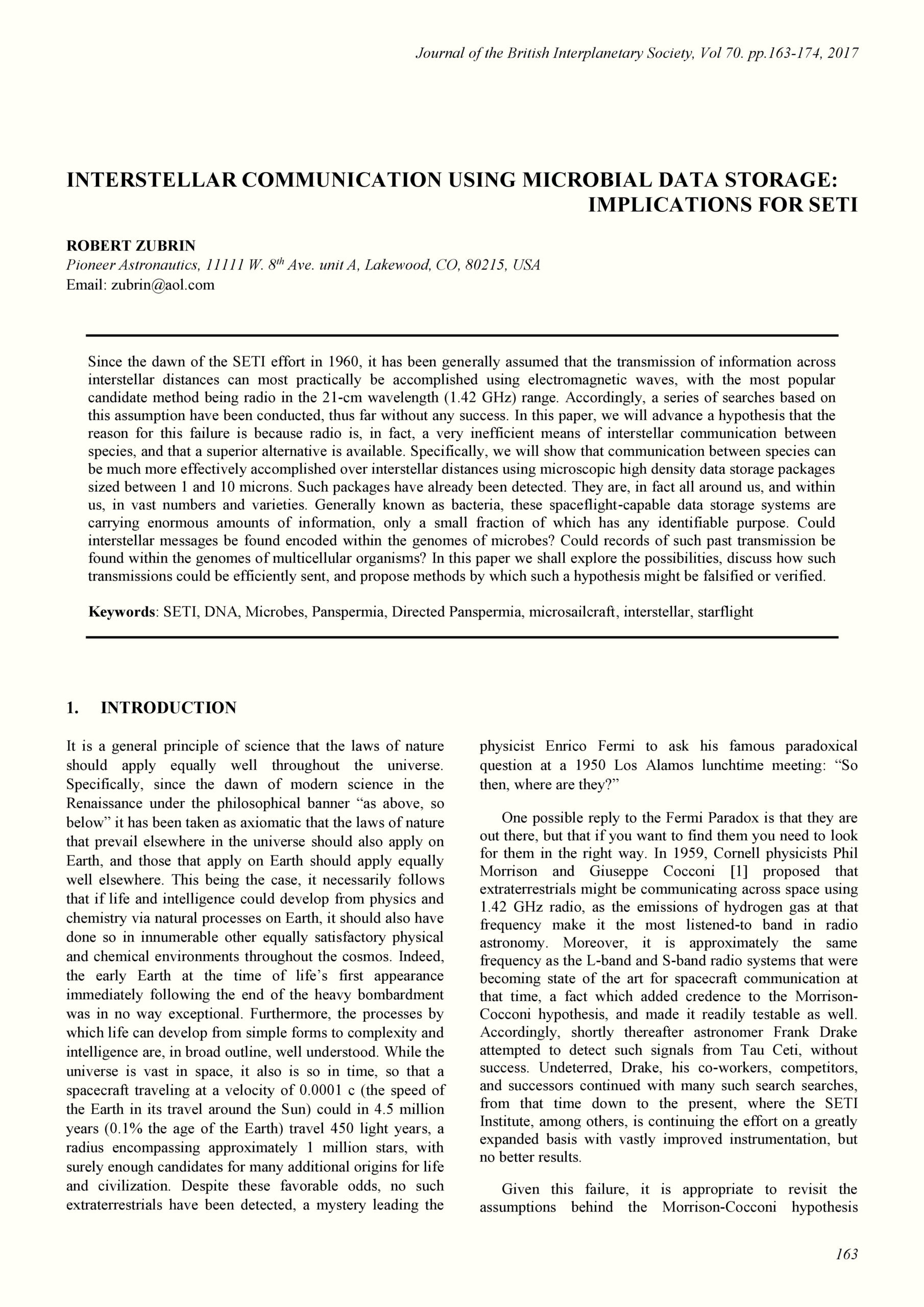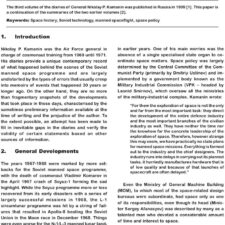Interstellar Communication Using Microbial Data Storage: Implications for SETI
£5.00
R. Zubrin (2017), JBIS, 70, pp.163-174
Refcode: 2017.70.163
Abstract:
Since the dawn of the SETI effort in 1960, it has been generally assumed that the transmission of information across interstellar distances can most practically be accomplished using electromagnetic waves, with the most popular candidate method being radio in the 21-cm wavelength (1.42 GHz) range. Accordingly, a series of searches based on this assumption have been conducted, thus far without any success. In this paper, we will advance a hypothesis that the reason for this failure is because radio is, in fact, a very inefficient means of interstellar communication between species, and that a superior alternative is available. Specifically, we will show that communication between species can be much more effectively accomplished over interstellar distances using microscopic high density data storage packages sized between 1 and 10 microns. Such packages have already been detected. They are, in fact all around us, and within us, in vast numbers and varieties. Generally known as bacteria, these spaceflight-capable data storage systems are carrying enormous amounts of information, only a small fraction of which has any identifiable purpose. Could interstellar messages be found encoded within the genomes of microbes? Could records of such past transmission be found within the genomes of multicellular organisms? In this paper we shall explore the possibilities, discuss how such transmissions could be efficiently sent, and propose methods by which such a hypothesis might be falsified or verified.





